
Borobudur: The Majestic Buddhist Temple of Indonesia
Discover Borobudur, Indonesia's awe-inspiring Buddhist temple, a UNESCO World Heritage Site surrounded by lush landscapes and steeped in rich cultural history.
Borobudur is a breathtaking ancient temple located in Central Java, Indonesia. It is one of the world's largest Buddhist monuments, built in the 9th century during the reign of the Sailendra Dynasty. This UNESCO World Heritage Site is a marvel of architecture and artistry. The temple's design reflects the path to enlightenment, with nine stacked platforms topped by a central dome. The walls and balustrades are adorned with intricate reliefs that depict various scenes from Buddhist teachings and Javanese life. One of the most awe-inspiring aspects of Borobudur is its location. Surrounded by lush green fields and distant hills, the temple stands as a silent guardian of history and spirituality. Early morning visits are highly recommended to witness the sunrise over the horizon, casting a golden glow on the temple's stone structures. The serene atmosphere during this time adds to the spiritual experience, making it a must-visit for those seeking tranquility and reflection. Borobudur is not just about the grand temple structure. The nearby villages offer a glimpse into local Javanese culture and traditions. Visitors can engage in various activities such as traditional pottery making, batik workshops, and culinary tours that highlight local flavors. The region also boasts other significant sites like the Mendut and Pawon temples, which are part of the Buddhist pilgrimage route. Together, these experiences provide a comprehensive understanding of the rich cultural and historical heritage of Java.
Local tips in Borobudur
- Visit early in the morning to see the sunrise and avoid the crowds.
- Wear comfortable walking shoes as the temple has many steps and uneven surfaces.
- Hire a local guide to gain deeper insights into the temple's history and significance.
- Don't miss the nearby Mendut and Pawon temples, which are part of the pilgrimage circuit.
- Explore local villages for unique cultural experiences like pottery making and batik workshops.
- Stay hydrated and bring sun protection, as the weather can get quite hot.
Borobudur: The Majestic Buddhist Temple of Indonesia
Borobudur is a breathtaking ancient temple located in Central Java, Indonesia. It is one of the world's largest Buddhist monuments, built in the 9th century during the reign of the Sailendra Dynasty. This UNESCO World Heritage Site is a marvel of architecture and artistry. The temple's design reflects the path to enlightenment, with nine stacked platforms topped by a central dome. The walls and balustrades are adorned with intricate reliefs that depict various scenes from Buddhist teachings and Javanese life. One of the most awe-inspiring aspects of Borobudur is its location. Surrounded by lush green fields and distant hills, the temple stands as a silent guardian of history and spirituality. Early morning visits are highly recommended to witness the sunrise over the horizon, casting a golden glow on the temple's stone structures. The serene atmosphere during this time adds to the spiritual experience, making it a must-visit for those seeking tranquility and reflection. Borobudur is not just about the grand temple structure. The nearby villages offer a glimpse into local Javanese culture and traditions. Visitors can engage in various activities such as traditional pottery making, batik workshops, and culinary tours that highlight local flavors. The region also boasts other significant sites like the Mendut and Pawon temples, which are part of the Buddhist pilgrimage route. Together, these experiences provide a comprehensive understanding of the rich cultural and historical heritage of Java.
When is the best time to go to Borobudur?
Iconic landmarks you can’t miss
Borobudur Temple
Explore the breathtaking Borobudur Temple, a UNESCO World Heritage site, where ancient artistry meets spiritual serenity in Central Java, Indonesia.
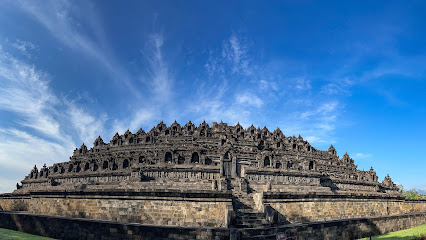
Bukit Rhema Gereja Merpati Putih
Discover peace and breathtaking views at Bukit Rhema Gereja Merpati Putih, a spiritual haven in Central Java surrounded by stunning landscapes.
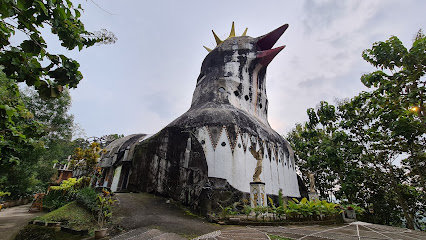
Ketep Pass Magelang
Experience breathtaking vistas and rich cultural heritage at Ketep Pass, a stunning tourist attraction in Central Java, Indonesia.
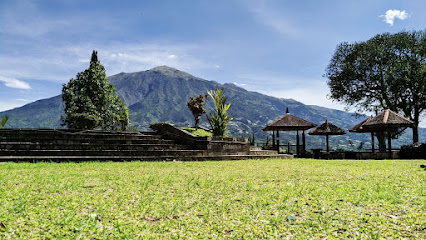
Punthuk Setumbu
Discover the enchanting beauty of Punthuk Setumbu, a serene hilltop haven offering breathtaking sunrise views and a glimpse of the historic Borobudur Temple.
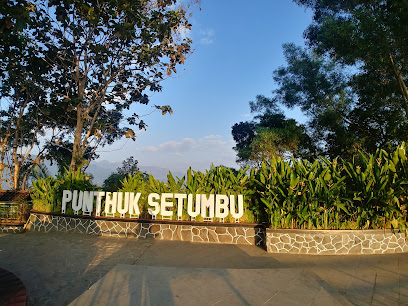
Mendut Buddhist Monastery
Explore the serene beauty of Mendut Buddhist Monastery, an ancient temple in Central Java, offering tranquility, rich cultural heritage, and spiritual insights.
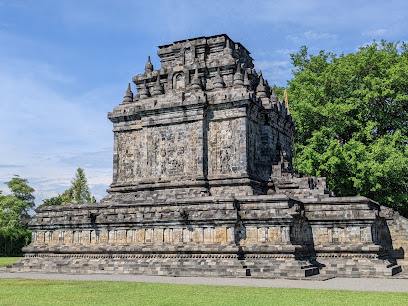
Plataran Borobudur Resort & Spa
Experience the perfect blend of luxury and culture at Plataran Borobudur Resort & Spa, just minutes away from the iconic Borobudur Temple.

Borobudur Temple Park
Discover the grandeur of Borobudur Temple Park, a UNESCO World Heritage Site and the largest Buddhist temple in the world, surrounded by stunning landscapes.
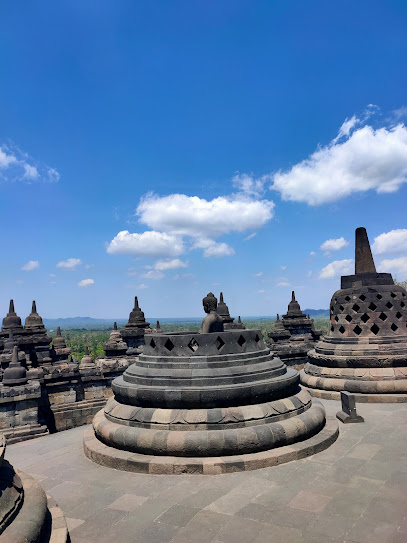
Pawon Temple
Explore the tranquil beauty of Pawon Temple, a historical Buddhist sanctuary near Borobudur, rich in culture and spirituality.
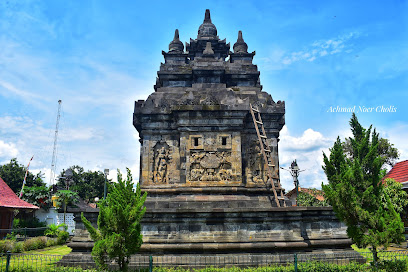
Plataran Heritage Borobudur Hotel
Discover the perfect blend of luxury and heritage at Plataran Heritage Borobudur Hotel, your gateway to the iconic Borobudur Temple.
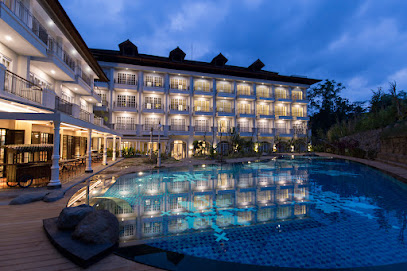
Candi Umbul
Explore the captivating Candi Umbul, an ancient bathing complex in Central Java, where history and nature intertwine for an unforgettable experience.
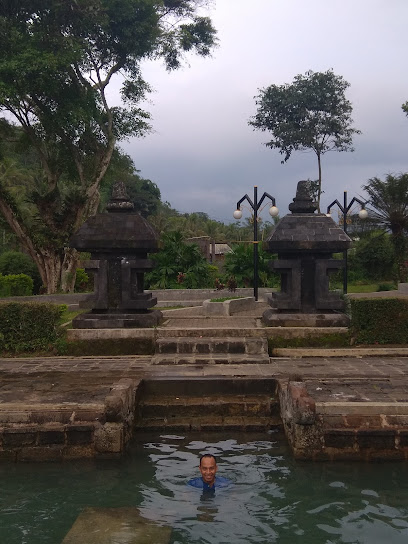
Camera House Borobudur
Discover the artistic beauty of Central Java at Camera House Borobudur, where photography and culture come together near the iconic Borobudur Temple.
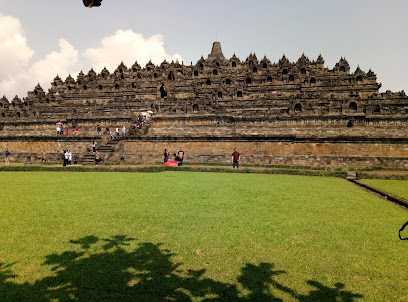
Borobudur Land
Experience adventure, culture, and delicious cuisine at Borobudur Land, a must-visit tourist attraction in Central Java, Indonesia.
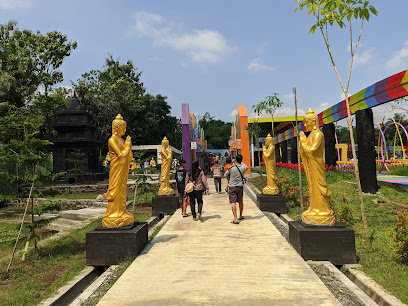
Borobudur Conservation Center
Discover the rich heritage of Borobudur Temple at the Borobudur Conservation Center, where history and culture come alive in Central Java.
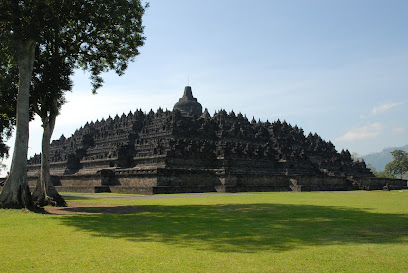
Bukit Barede
Discover Bukit Barede, a breathtaking hill offering stunning views and rich cultural experiences near Borobudur in Central Java, Indonesia.
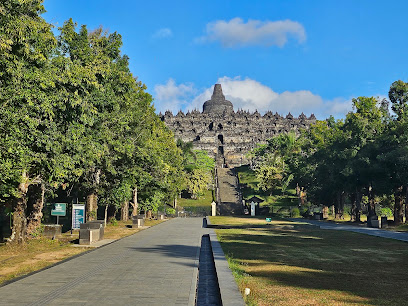
Candi Selogriyo
Discover the serene beauty and rich heritage of Candi Selogriyo, a Hindu temple nestled in the lush landscapes of Central Java.
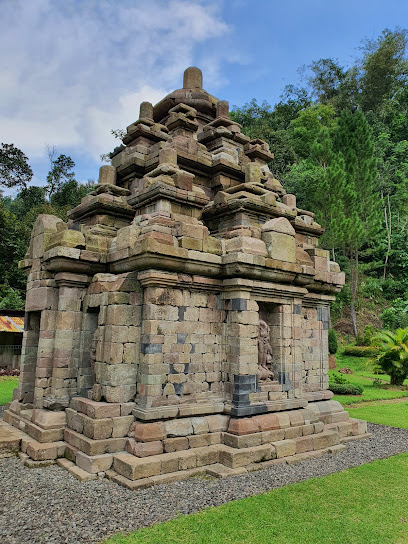
Unmissable attractions to see
Punthuk Setumbu
Experience breathtaking sunrises and serene landscapes at Punthuk Setumbu, the perfect scenic getaway near Borobudur in Central Java.
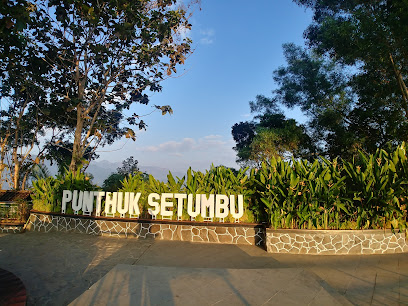
Lapangan Tuk Songo
Explore the captivating beauty and rich culture of Lapangan Tuk Songo in Central Java, a serene escape perfect for relaxation and adventure.
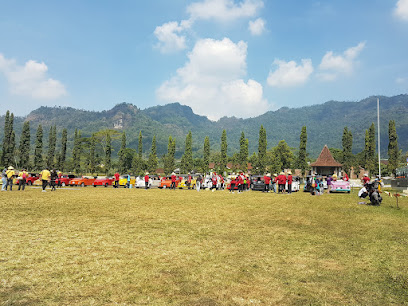
Junkyard Autopark & Cafe
Explore a unique blend of vintage automobiles and local flavors at Junkyard Autopark & Cafe, a must-see gem in Borobudur.
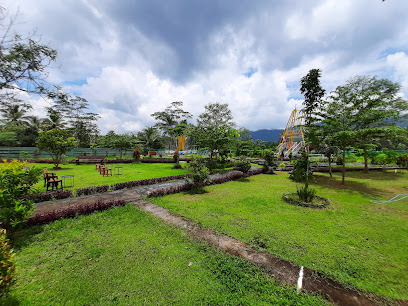
Camera House Borobudur
Experience the beauty of Borobudur through art and photography at Camera House Borobudur, a must-visit gallery in Central Java.
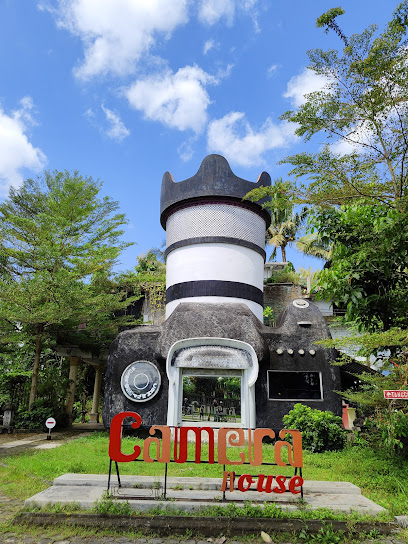
Dagi Hill
Experience stunning views of Borobudur from Dagi Hill, a serene escape that combines natural beauty with cultural richness in Central Java.
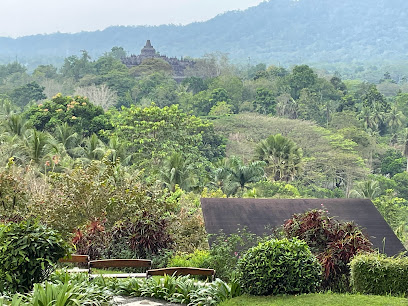
Wisata Kelinci Borobudur
Immerse yourself in the beauty of nature and culture at Wisata Kelinci Borobudur, where charming rabbits meet stunning views of Borobudur Temple.

Punthuk Mongkrong
Discover breathtaking views and serene beauty at Punthuk Mongkrong, a must-visit destination in Central Java, Indonesia, ideal for relaxation and exploration.
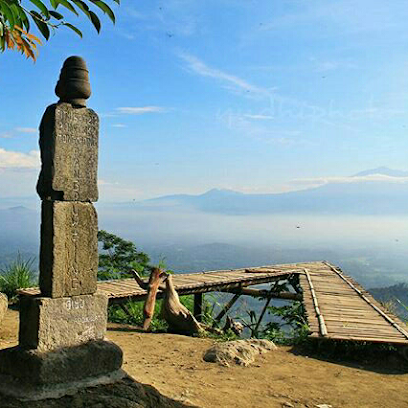
Museum Kapal Samudraraksa
Explore the rich maritime heritage of Indonesia at Museum Kapal Samudraraksa, near the iconic Borobudur Temple in Central Java.
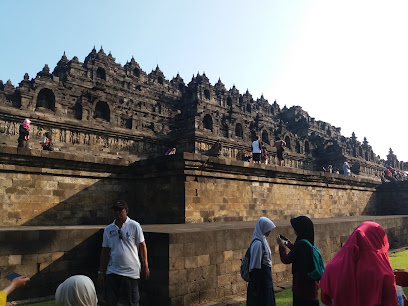
Desa Wisata Wanurejo
Discover the vibrant culture and breathtaking landscapes of Desa Wisata Wanurejo, a hidden gem near Borobudur Temple in Central Java, Indonesia.
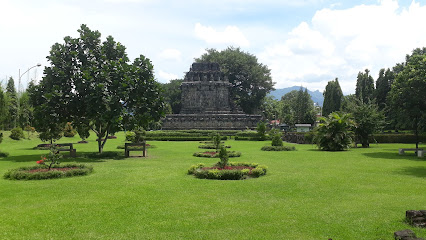
Haji Widayat Museum
Explore the artistic legacy of Haji Widayat at the Haji Widayat Museum, a cultural treasure in Magelang showcasing Indonesia's vibrant art scene.

Balkondes Giripurno
Explore the cultural richness and breathtaking landscapes of Balkondes Giripurno, a hidden gem near Borobudur Temple in Central Java.
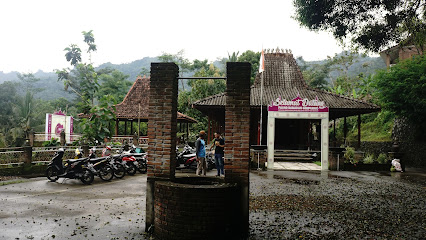
Puncak View Sunrise
Witness the breathtaking sunrise at Puncak View Sunrise, a scenic viewpoint near Borobudur Temple, where nature's beauty meets cultural heritage.
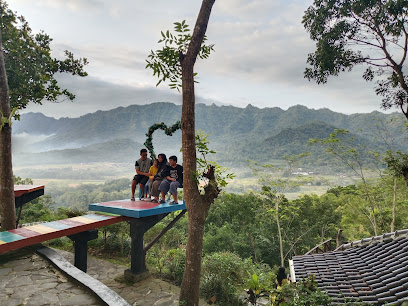
Punthuk Gupakan
Discover breathtaking views and serene landscapes at Punthuk Gupakan, a must-see destination for every traveler in Central Java.
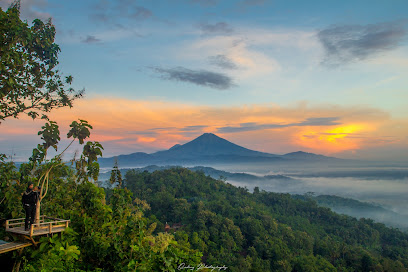
Borobudur Unique & Art Gallery Indonesia
Explore the enchanting Borobudur Unique & Art Gallery, where art and culture meet the breathtaking beauty of Central Java's heritage.

Watu Kendhil
Experience the breathtaking beauty and rich culture of Watu Kendhil, a hidden gem in Central Java, near the iconic Borobudur Temple.

Essential places to dine
Kedai Bukit Rhema
Experience delightful Indonesian cuisine with breathtaking views at Kedai Bukit Rhema near Borobudur Temple.
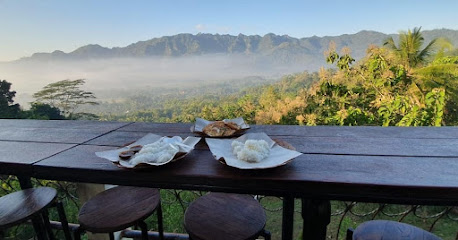
Enam Langit by Plataran
Experience exquisite Indonesian cuisine with breathtaking views at Enam Langit by Plataran in Central Java.
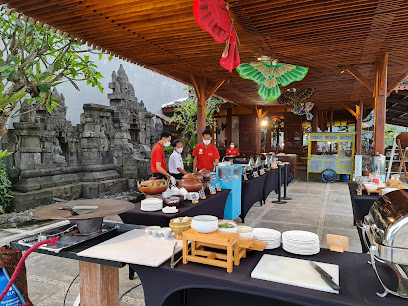
Waroeng Kopi Borobudur
Discover authentic Indonesian flavors and stunning views at Waroeng Kopi Borobudur near the iconic temple.
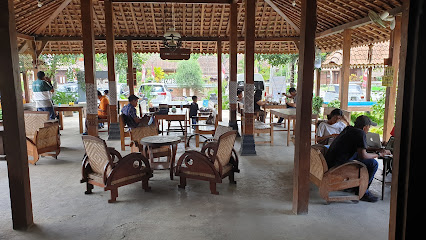
DWANU eatery & artisan steak | DWANU Resto Borobudur
Experience exceptional artisan steaks and local cuisine at DWANU Eatery near Borobudur Temple - a culinary gem in Central Java.
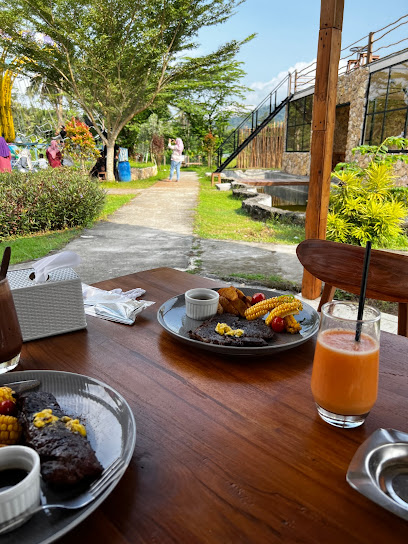
Bogor Cafe
Experience authentic Indonesian cuisine at Bogor Cafe in Hotel Borobudur - A must-visit culinary destination in Central Jakarta.
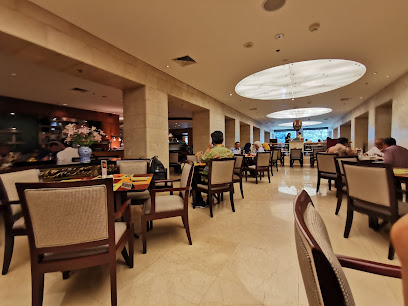
Dapoer Gending
Discover the essence of Indonesian cuisine at Dapoer Gending - where every dish is a journey into local flavor.

Rumah Makan Sehati Borobudur Spesial Ndas Beong
Experience authentic Indonesian cuisine at Rumah Makan Sehati Borobudur – a delightful dining destination near the iconic temple.
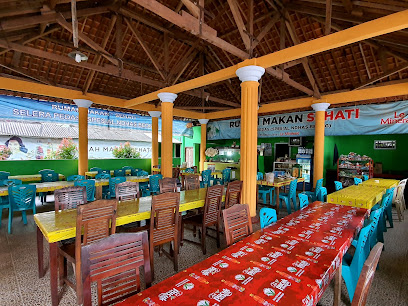
Borobudur Silver Resto
Experience authentic Indonesian cuisine and Western delights at Borobudur Silver Resto in Central Java's stunning landscape.
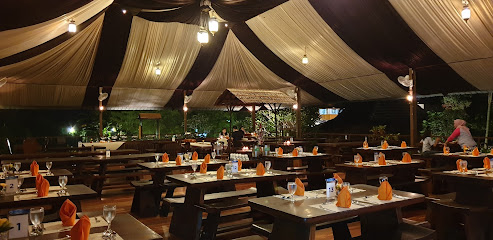
Truntum Gasblock Borobudur
Experience exquisite dining at Truntum Gasblock Borobudur with stunning views of the iconic temple in Central Java.
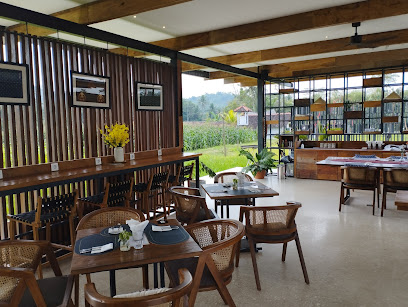
Joglo Panglipuran Borobudur
Discover authentic Indonesian cuisine at Joglo Panglipuran Borobudur with stunning views of the iconic temple.

Stupa Restaurant
Experience exquisite Indonesian cuisine surrounded by breathtaking views near Borobudur Temple.
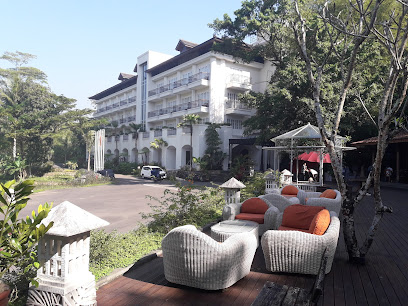
The Nalaya Hotel & Resto
Discover tranquility and exquisite dining at The Nalaya Hotel & Resto, your gateway to Borobudur's timeless beauty.

Pasta & Kopi Niti
Experience the delightful fusion of Italian and Javanese cuisine at Pasta & Kopi Niti in Borobudur's serene surroundings.
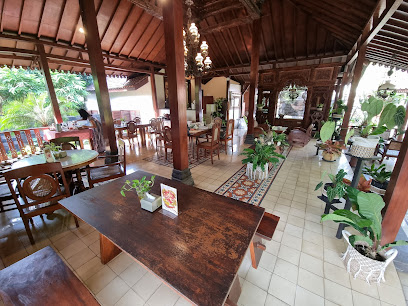
Warung Kopi Badhek
Discover authentic Javanese flavors at Warung Kopi Badhek in Borobudur – where delicious meals meet warm hospitality amidst stunning scenery.
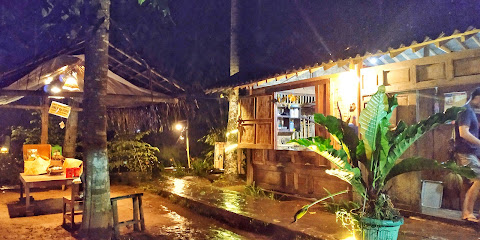
Benoa Borobudur Resto & Gallery
Experience exquisite Chinese cuisine surrounded by breathtaking views of Borobudur Temple at Benoa Borobudur Resto & Gallery.

Markets, malls and hidden boutiques
Armada Town Square Mall
Discover the ultimate shopping and entertainment experience at Armada Town Square Mall in Central Java, where retail therapy meets local culture.
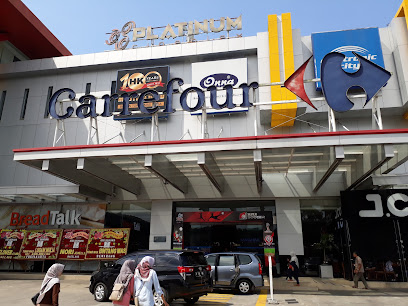
Bukit Rhema Gereja Merpati Putih
Discover the tranquil oasis of Bukit Rhema Gereja Merpati Putih, where stunning architecture meets serene landscapes in Central Java.
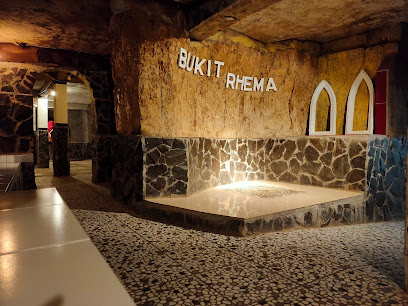
Kedai Bukit Rhema
Discover Kedai Bukit Rhema, a captivating cafe in Borobudur offering delightful local cuisine and stunning views, perfect for every traveler.
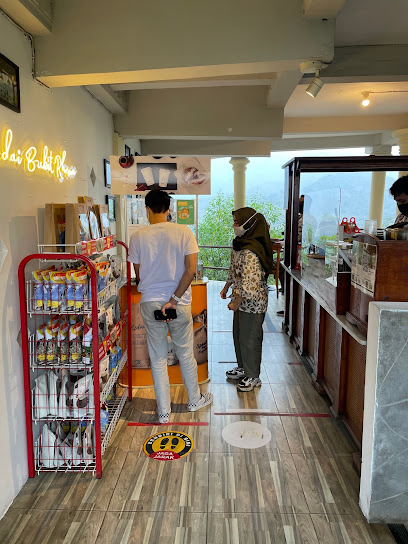
Borobudur Temple Park
Discover the breathtaking beauty and spiritual significance of Borobudur Temple Park, a UNESCO World Heritage site in Central Java, Indonesia.

Pawon Temple
Pawon Temple: A tranquil Buddhist sanctuary near Borobudur, showcasing Indonesia's rich heritage and stunning ancient architecture.
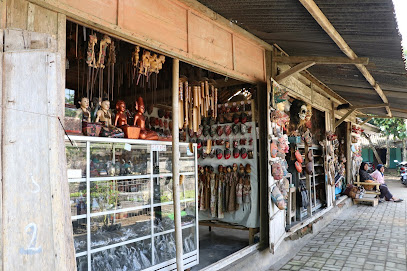
Camera House Borobudur
Explore the vibrant art scene at Camera House Borobudur, a unique gallery near the iconic Borobudur Temple, immersing you in local culture.
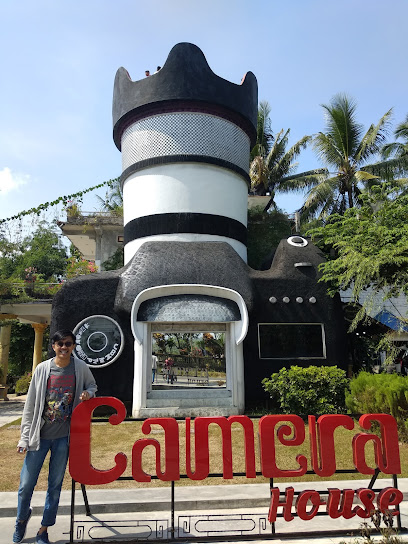
Truntum Gasblock Borobudur
Experience the perfect blend of culinary delights and stunning views at Truntum Gasblock Borobudur, a must-visit restaurant near the iconic Borobudur Temple.
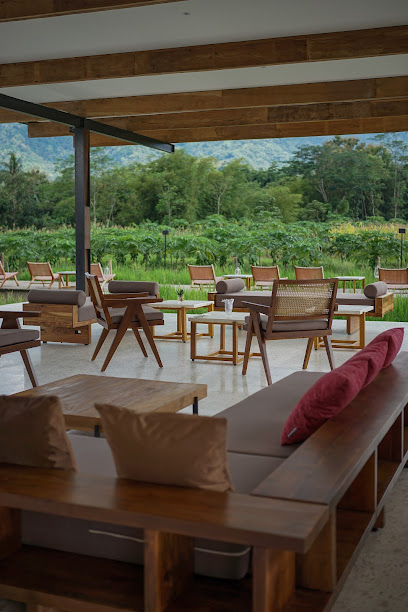
Istana Oleh Oleh Endang Jaya
Explore Istana Oleh Oleh Endang Jaya for authentic gifts, local snacks, and unique handicrafts in the heart of Magelang, Central Java.
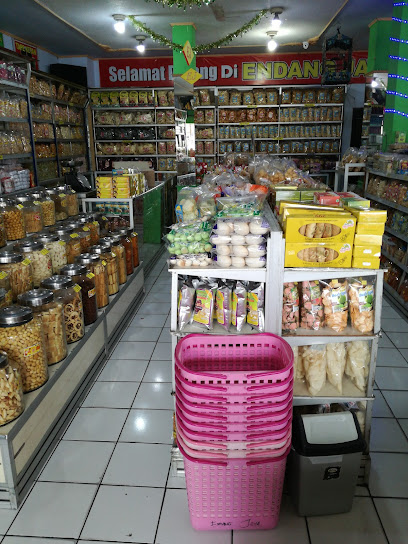
Point Coffee
Discover Point Coffee, a charming retreat in Borobudur, Central Java, serving quality brews and snacks in a cozy atmosphere.
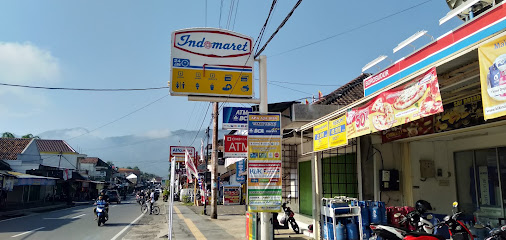
Omah Branded Matahari
Discover the best of Indonesian fashion at Omah Branded Matahari in Magelang, where style meets tradition in a vibrant shopping experience.
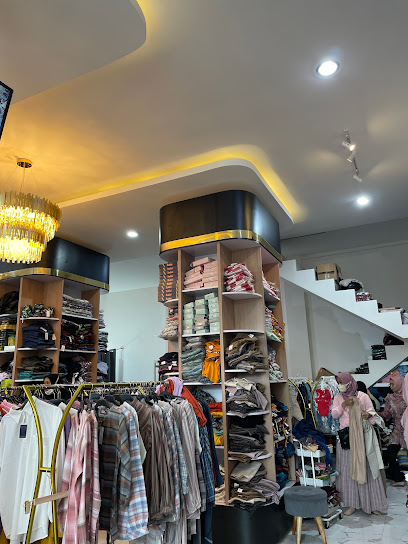
Borobudur Unique & Art Gallery Indonesia
Discover the mesmerizing fusion of contemporary art and rich Indonesian culture at Borobudur Unique & Art Gallery, near the iconic Borobudur Temple.
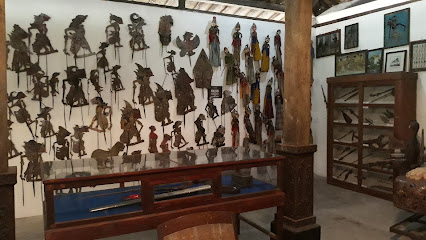
Stand By - By Typical Borobudur
Explore the flavors of Borobudur at Stand By, a delightful pastry haven offering a sweet retreat for every traveler.
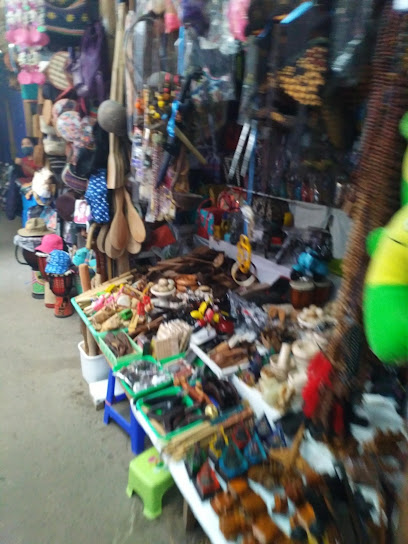
Padepokan APEL WATOE
Discover the artistic soul of Indonesia at Padepokan APEL WATOE, a captivating gallery in Borobudur showcasing vibrant local culture.

Hollow.
Explore Hollow in Magelang for trendy fashion accessories that capture the essence of local style and creativity.

VIKI BRANDED
Explore local fashion at VIKI BRANDED in Magelang Regency, where unique apparel meets contemporary style, reflecting the vibrant culture of Central Java.
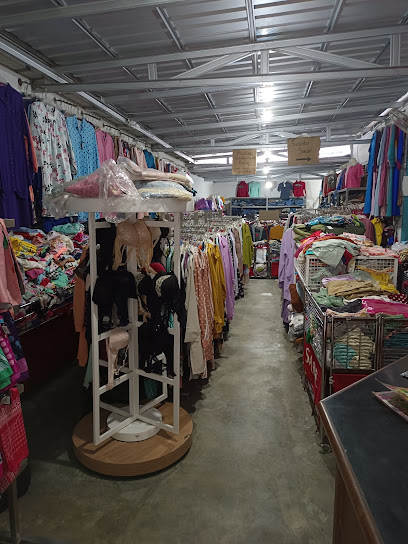
Essential bars & hidden hideouts
Kedai Bukit Rhema
Experience delightful dining at Kedai Bukit Rhema, where culinary art meets breathtaking views of Borobudur in Central Java.
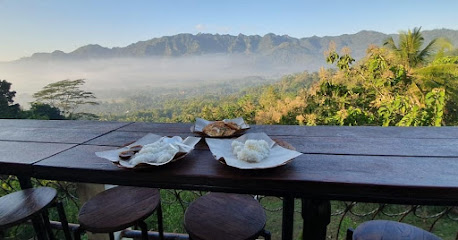
Enam Langit by Plataran
Experience the culinary delights of Enam Langit by Plataran, where stunning views and exquisite Indonesian cuisine meet in Central Java.
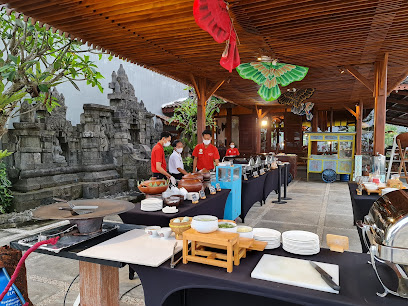
Balkondes Tuksongo
Experience the rich flavors of Central Java at Balkondes Tuksongo, a culinary gem near Borobudur Temple, perfect for travelers seeking authentic Indonesian cuisine.
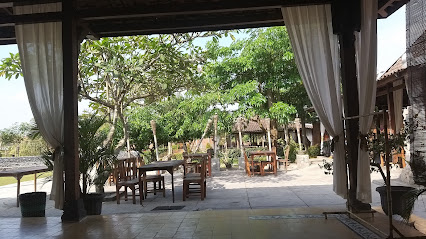
Truntum Gasblock Borobudur
Experience the flavors of Central Java at Truntum Gasblock Borobudur, a delightful restaurant near the iconic Borobudur Temple.
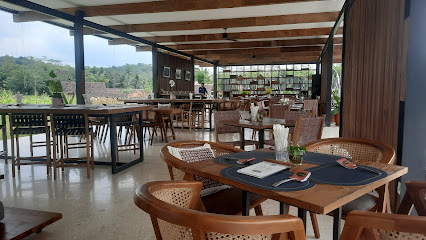
Joglo Panglipuran Borobudur
Experience authentic Indonesian cuisine in a traditional setting at Joglo Panglipuran Borobudur, near the majestic Borobudur Temple.

Stupa Restaurant
Experience the rich flavors of Central Java at Stupa Restaurant, a culinary retreat with stunning views near Borobudur Temple.
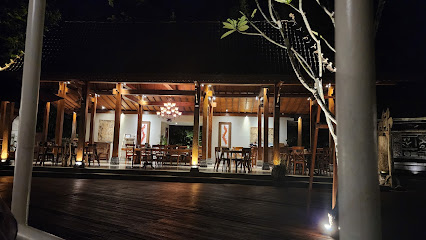
The Nalaya Hotel & Resto
Discover the perfect blend of comfort and local cuisine at The Nalaya Hotel & Resto, your gateway to exploring Borobudur's wonders.

Benoa Borobudur Resto & Gallery
Experience the best of Chinese cuisine at Benoa Borobudur Resto & Gallery, a culinary haven in the heart of Borobudur, Central Java.
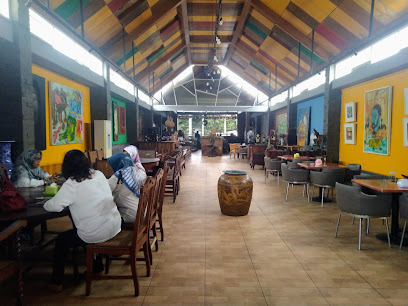
Van Bloemen 1881
Experience the taste of Central Java at Van Bloemen 1881, where traditional cuisine meets modern elegance in a breathtaking setting.
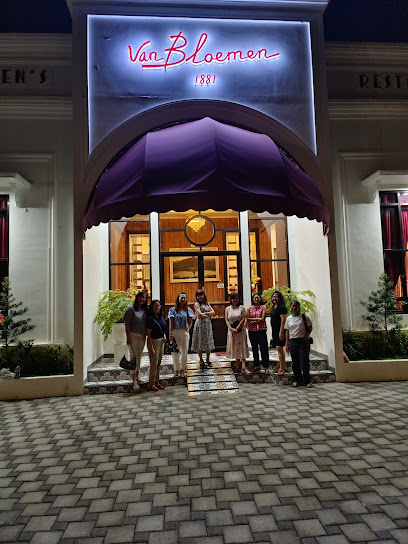
Restaurant La Table by Le Temple Borobudur
Experience the exquisite flavors of Central Java at Restaurant La Table by Le Temple Borobudur, where fine dining meets breathtaking views.
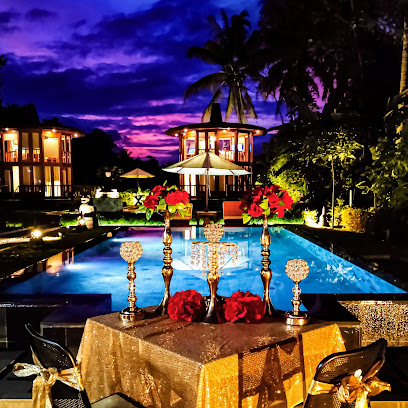
Balkondes Borobudur
Experience authentic Indonesian cuisine and local culture at Balkondes Borobudur, a must-visit destination near the iconic Borobudur Temple.
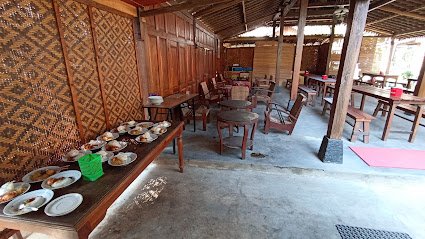
Menoreh Restaurant
Experience the best of Indonesian cuisine with breathtaking views of Borobudur at Menoreh Restaurant in Central Java.
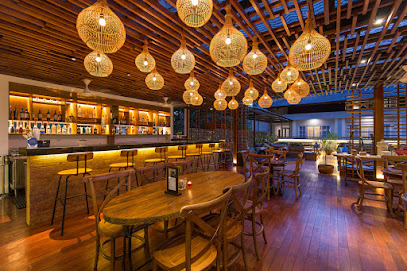
Meat & Grill By MEY MEY
Experience the rich flavors of Central Java at Meat & Grill By MEY MEY, where every dish is a delight for the senses.

Patio Colonial
Discover the enchanting flavors of Central Java at Patio Colonial, where exquisite cuisine meets breathtaking views of Borobudur Temple.
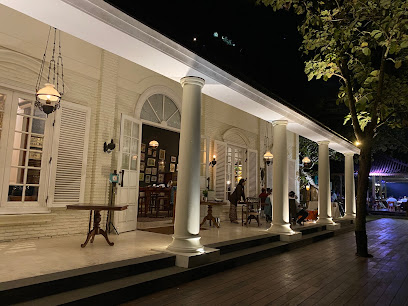
Shailendra Bistro
Savor the essence of Indonesian cuisine at Shailendra Bistro, where tradition meets modern culinary artistry in scenic Borobudur.
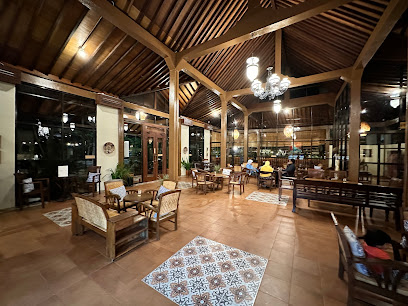
Local Phrases about Borobudur
-
- HelloHalo
[HAH-loh] - GoodbyeSelamat tinggal
[suh-LAH-maht TING-gahl] - YesYa
[yah] - NoTidak
[TEE-dahk] - Please/You're welcomeSilakan
[see-LAH-kahn] - Thank youTerima kasih
[tuh-REE-mah KAH-see] - Excuse me/SorryMaaf
[mah-AHF] - How are you?Apa kabar?
[AH-pah KAH-bahr] - Fine. And you?Baik. Dan kamu?
[bah-EK. dahn KAH-moo] - Do you speak English?Apakah kamu bisa berbicara bahasa Inggris?
[ah-PAH-kah KAH-moo BEE-sah buhr-bee-CHA-rah bah-HAH-sah ING-griss] - I don't understandSaya tidak mengerti
[SAH-yah TEE-dahk muhn-GUHR-tee]
- HelloHalo
-
- I'd like to see the menu, pleaseSaya ingin melihat menu, tolong
[SAH-yah IN-geen muh-LIH-aht MEH-noo TOH-lohng] - I don't eat meatSaya tidak makan daging
[SAH-yah TEE-dahk MAH-kahn DAH-yahng] - Cheers!Selamat minum!
[suh-LAH-maht MEE-noom] - I would like to pay, pleaseSaya ingin membayar, tolong
[SAH-yah IN-geen muhm-BAH-yahr TOH-lohng]
- I'd like to see the menu, pleaseSaya ingin melihat menu, tolong
-
- Help!Tolong!
[TOH-lohng] - Go away!Pergi!
[PEHR-gee] - Call the Police!Panggil polisi!
[PAHNG-geel poh-LEE-see] - Call a doctor!Panggil dokter!
[PAHNG-geel DOHK-tehr] - I'm lostSaya tersesat
[SAH-yah tuhr-SEH-saht] - I'm illSaya sakit
[SAH-yah SAH-keet]
- Help!Tolong!
-
- I'd like to buy...Saya ingin membeli...
[SAH-yah IN-geen muhm-BUH-lee] - I'm just lookingSaya hanya melihat-lihat
[SAH-yah HAHN-yah muh-LIH-aht-LEE-haht] - How much is it?Berapa harganya?
[buh-RAH-pah HAR-gahn-yah] - That's too expensiveItu terlalu mahal
[EE-too tuhr-LAH-loo MAH-hahl] - Can you lower the price?Bisakah kamu menurunkan harganya?
[BEE-sah-kah KAH-moo muh-NOOR-kahn HAR-gahn-yah]
- I'd like to buy...Saya ingin membeli...
-
- What time is it?Jam berapa sekarang?
[jahm buh-RAH-pah suh-KAH-rahn] - It's one o'clockJam satu
[jahm SAH-too] - Half past (10)Setengah (sepuluh)
[suh-TUHNG-ah (suh-POO-loo)] - MorningPagi
[PAH-gee] - AfternoonSore
[SOH-reh] - EveningMalam
[MAH-lahm] - YesterdayKemarin
[kuh-MAH-reen] - TodayHari ini
[HAH-ree EE-nee] - TomorrowBesok
[BUH-sohk] - 1Satu
[SAH-too] - 2Dua
[DOO-ah] - 3Tiga
[TEE-gah] - 4Empat
[UHM-paht] - 5Lima
[LEE-mah] - 6Enam
[EH-nahm] - 7Tujuh
[TOO-joo] - 8Delapan
[DEH-lah-pahn] - 9Sembilan
[SUHM-bee-lahn] - 10Sepuluh
[suh-POO-loo]
- What time is it?Jam berapa sekarang?
-
- Where's a/the...?Dimana ada/...?
[dee-MAH-nah AH-dah/...?] - What's the address?Berapa alamatnya?
[buh-RAH-pah ah-LAH-maht-nyah] - Can you show me (on the map)?Bisakah kamu tunjukkan (di peta)?
[BEE-sah-kah KAH-moo TOON-jook-kahn (dee PEH-tah)?] - When's the next (bus)?Kapan yang berikutnya (bis)?
[KAH-pahn yahng buh-REE-KOOT-nyah (bees)?] - A ticket (to ....)Selembar tiket (ke ....)
[suh-LUHM-bahr TEE-keht (keh ....)]
- Where's a/the...?Dimana ada/...?
History of Borobudur
-
Borobudur, the world's largest Buddhist temple, was constructed during the reign of the Sailendra Dynasty between the 8th and 9th centuries. This architectural marvel is located in Central Java, Indonesia, and was built under the rule of King Samaratungga. The construction process is believed to have taken around 75 years to complete, involving thousands of laborers and artisans.
-
Borobudur is designed as a massive stupa and takes the form of a mandala when viewed from above. It comprises nine stacked platforms, six square and three circular, topped by a central dome. The temple is decorated with 2,672 relief panels and 504 Buddha statues. The central dome is surrounded by 72 Buddha statues seated inside perforated stupas. The temple's design represents the Buddhist cosmology, illustrating the path from the earthly realm to Nirvana.
-
The temple was abandoned in the 14th century as the influence of Buddhism waned and Islam spread throughout Java. Borobudur lay hidden under layers of volcanic ash and jungle growth until it was rediscovered in 1814 by Sir Thomas Stamford Raffles, the British ruler of Java at the time. Raffles commissioned a survey of the site, which marked the beginning of its restoration.
-
Major restoration efforts took place in the early 20th century under Dutch colonial administration and later by the Indonesian government. The most significant restoration project occurred between 1975 and 1982, led by the Indonesian government and UNESCO. This extensive endeavor aimed to stabilize the structure, clean the reliefs, and ensure the temple's preservation for future generations. Borobudur was subsequently declared a UNESCO World Heritage Site in 1991.
-
Borobudur remains an active site of pilgrimage for Buddhists from around the world. The temple is particularly significant during Vesak, the most important Buddhist festival, which celebrates the birth, enlightenment, and death of Buddha. During Vesak, thousands of pilgrims gather at Borobudur to participate in rituals and ceremonies, including a procession that starts at Mendut Temple and ends at Borobudur.
-
Today, Borobudur is one of Indonesia's most visited tourist attractions, drawing millions of visitors each year. In addition to exploring the temple's intricate reliefs and statues, visitors can enjoy panoramic views of the surrounding Kedu Plain, framed by the distant volcanoes of Merapi and Merbabu. The site is also a hub for cultural activities, including traditional Javanese dance and music performances, which offer a glimpse into the rich heritage of the region.
Borobudur Essentials
-
Borobudur is located in Central Java, Indonesia, approximately 40 kilometers northwest of Yogyakarta. The nearest airport is Adisucipto International Airport in Yogyakarta. From Yogyakarta, you can take a taxi, hire a private car, or use public transportation such as buses or minibuses (known locally as 'microbuses') to reach Borobudur. The journey typically takes around 1.5 to 2 hours by road. Alternatively, you can take a train to Magelang and then a taxi or bus to Borobudur.
-
Once you are in Borobudur, getting around is relatively easy. Many attractions are within walking distance or a short ride away. You can rent a bicycle or a scooter for more flexibility. Local taxis and ride-hailing services like Grab are also available. For a more traditional experience, try taking an 'andong' (horse-drawn carriage). If you plan to explore the surrounding areas, renting a car may be a convenient option.
-
The official currency in Indonesia is the Indonesian Rupiah (IDR). Credit cards are accepted in most hotels, restaurants, and shops within Borobudur, but it is advisable to carry some cash for smaller establishments and local markets. ATMs are available in Borobudur, but it's wise to withdraw sufficient cash in Yogyakarta before traveling to the temple complex.
-
Borobudur is generally a safe destination for tourists. However, standard precautions should be taken. Avoid walking alone at night in unfamiliar areas and always keep an eye on your belongings, especially in crowded places. While Borobudur itself does not have high-crime areas targeting tourists, it is always best to stay vigilant and aware of your surroundings.
-
In case of an emergency, dial 112 for immediate assistance. The local police station and medical facilities are available in Borobudur. It is highly recommended to have travel insurance that covers medical emergencies. For minor health issues, there are pharmacies in the area where you can purchase over-the-counter medications.
-
Fashion: Do dress modestly, especially when visiting religious sites like Borobudur Temple. Avoid wearing revealing clothing. Religion: Do respect local customs and traditions. Remove your shoes before entering temples or sacred sites. Public Transport: Do be respectful and give up your seat to elderly passengers. Don't eat or drink on public transport. Greetings: Do greet people with a smile and a slight bow. A handshake is also acceptable. Eating & Drinking: Do try local delicacies and accept food offerings graciously. Don't refuse hospitality, as it is considered impolite.
-
To experience Borobudur like a local, consider visiting during the early morning hours to catch the sunrise and avoid the crowds. Participate in local cultural activities such as traditional Javanese dance performances or batik workshops. Engage with locals, who are often friendly and willing to share stories about the area's history and culture. Don't miss exploring the nearby villages of Candirejo and Wanurejo for a glimpse of traditional Javanese rural life.
Trending Landmarks in Borobudur
-
Borobudur Temple
-
Bukit Rhema Gereja Merpati Putih
-
Ketep Pass Magelang
-
Punthuk Setumbu
-
Mendut Buddhist Monastery
-
Plataran Borobudur Resort & Spa
-
Borobudur Temple Park
-
Pawon Temple
-
Plataran Heritage Borobudur Hotel
-
Candi Umbul
-
Camera House Borobudur
-
Borobudur Land
-
Borobudur Conservation Center
-
Bukit Barede
-
Candi Selogriyo
Nearby Cities to Borobudur
-
Things To Do in Semarang
-
Things To Do in Surabaya
-
Things To Do in Bandung
-
Things To Do in Jakarta
-
Things To Do in Bali
-
Things To Do in Poon Saan
-
Things To Do in Settlement
-
Things To Do in Flying Fish Cove
-
Things To Do in Drumsite
-
Things To Do in Greta Beach
-
Things To Do in Kuching
-
Things To Do in Balikpapan
-
Things To Do in Makassar
-
Things To Do in East Coast Park
-
Things To Do in Sentosa








